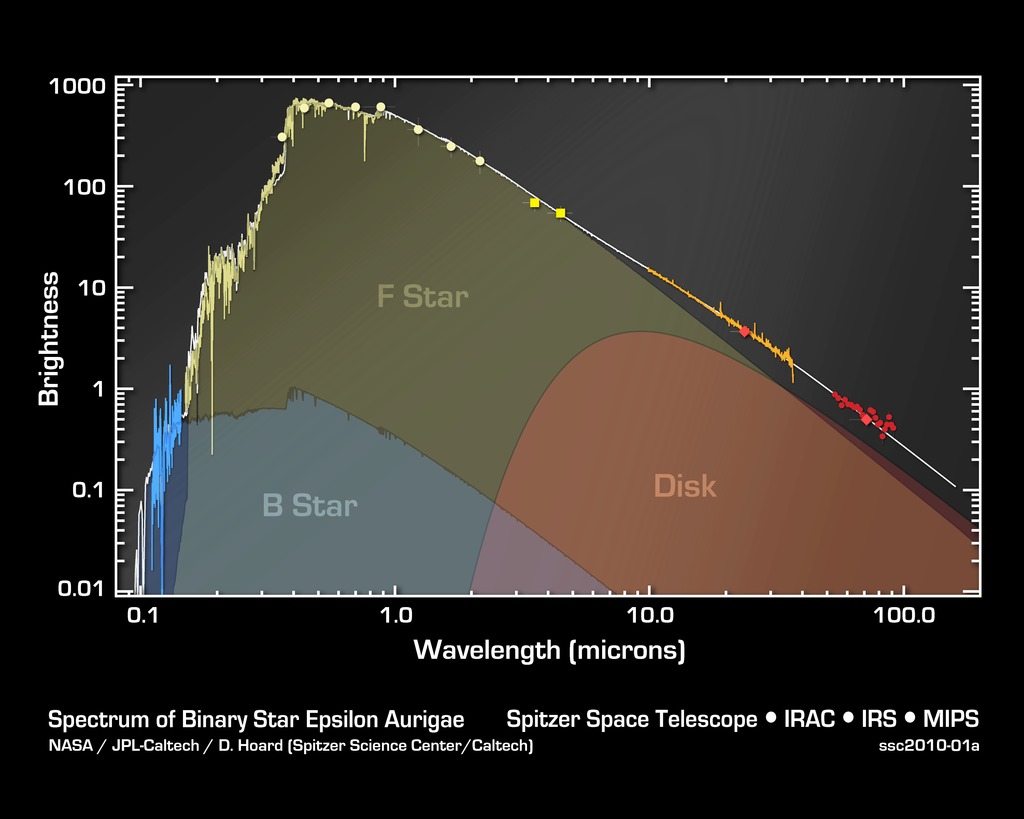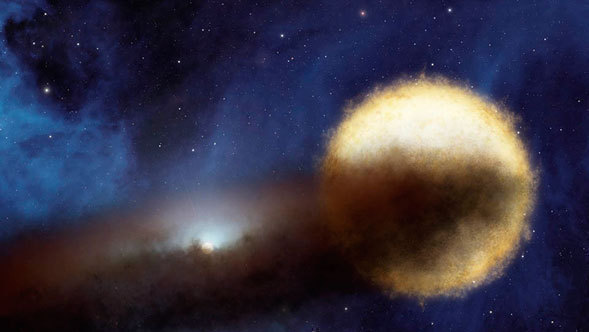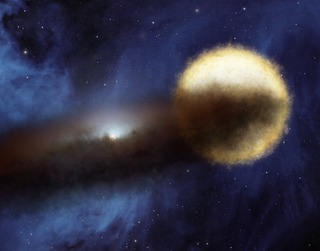
Credit: NASA/JPL-Caltech/D. Hoard (SSC/Caltech)
Chart • January 5th, 2010 • ssc2010-01a
ssc2010-01a
This graph of data from multiple telescopes shows the distribution of light from a pair of stars known as Epsilon Aurigae. For centuries, astronomers had not been able to figure out the nature of this "eclipsing binary system," in which a bright naked-eye star is eclipsed by a companion object every 27 years.
Data from NASA's Spitzer Space Telescope are pointing to a solution to this age-old riddle. The Spitzer data, shown in bright yellow and orange, provide the missing puzzle pieces need to fit all the data on the star together into a neat model. The blue data show ultraviolet observations, and the light yellow/green data are from visible-light telescopes. The blue data show light from the companion object, a so-called B star, while the light yellow data show light from the main bright star, called an F star. The orange and bright yellow data from Spitzer show light from the F star and a dusty disk that is surrounding the B-star.
The new model indicates that the F star is not a supergiant as a favored theory had proposed but a dying star with a lot less mass.
About the Object
- Name
- Epsilon Aurigae
- Type
- Star > Circumstellar Material > Disk > Debris
- Star > Spectral Type > F
- Star > Spectral Type > B
- Distance
- 2,000 Light Years






